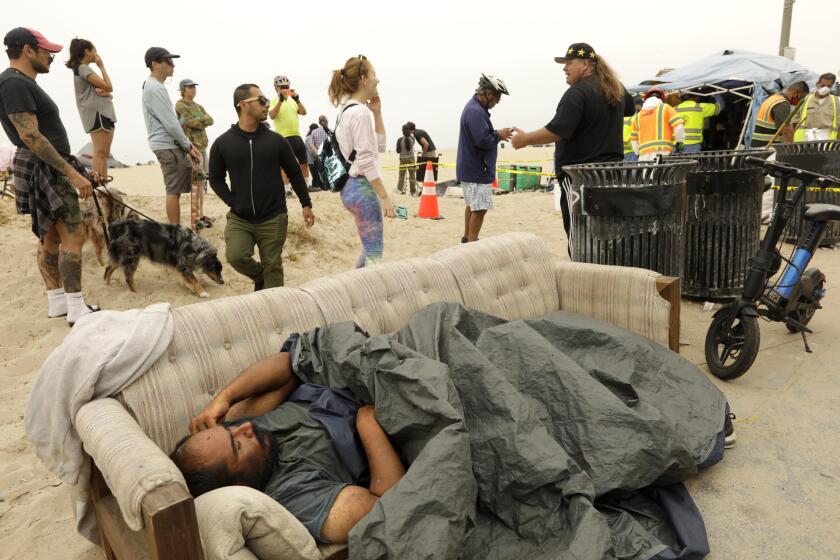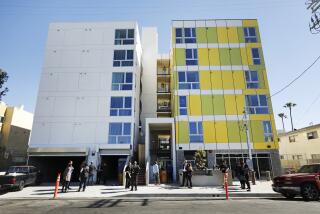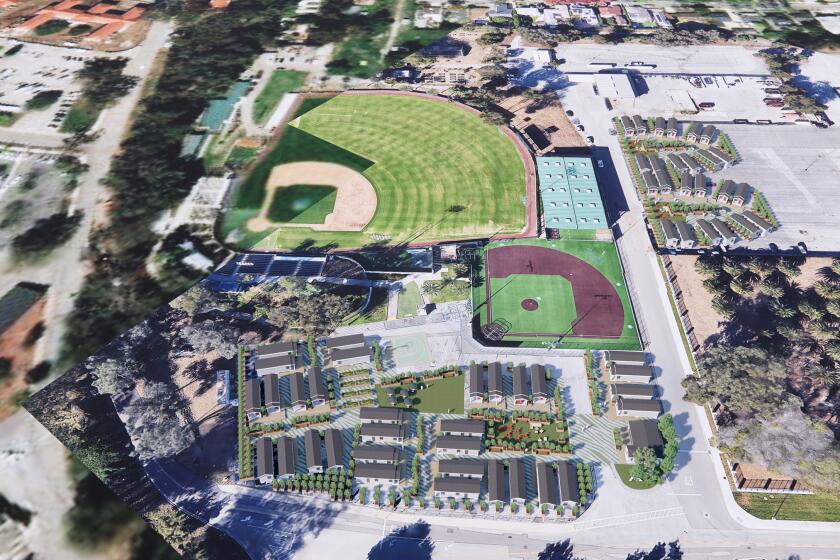L.A. sets goal of 25,000 new housing units for homeless people
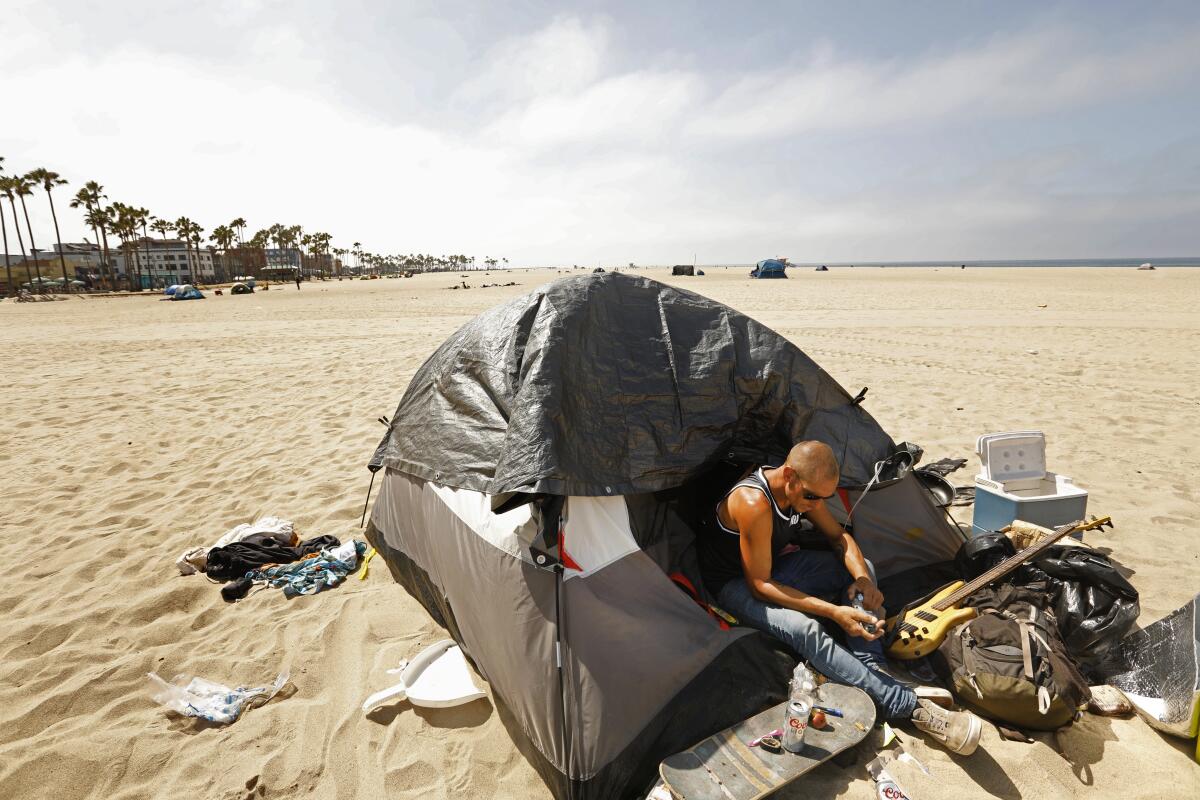
Facing an acute housing crisis and rising public anger over tents in public spaces, the Los Angeles City Council on Tuesday approved an ambitious goal of building 25,000 units of new housing for homeless people by 2025.
The hope is that the new construction will help the city relocate many of the people who live on sidewalks, freeway embankments and parks.
The last count, which took place before the COVID-19 pandemic, found about 41,000 homeless people within the L.A. city limits. Of them, the Los Angeles Homeless Services Authority estimates about 29,000 live on the streets or in cars. The rest are in shelters or other forms of temporary housing.
Councilman Kevin de León introduced the proposal after spending months saying the city needs a goal — a “North Star” — in its quest to solve the homelessness crisis. His proposal lacks much detail for how the city would expand housing production to hit the goal — or what the cost would be.
He said it was important to create a benchmark for elected officials and the public to assess success and failure. He also said that having a goal would help local government organize itself as it asks the state and federal governments for more help.
The 25,000 units would be made up of a mix of permanent housing and interim non-congregate shelter options — though he didn’t specify the exact breakdown. (Congregate shelters are typical, bunkhouse-style homeless shelters.) De León, the former leader of the state Senate who is weighing a run for mayor, said purchasing old hotels, building modular units and master leasing apartments could be some of the ways the city hits the number.
Councilman Kevin De León will introduce a range of motions Tuesday with the goal creating 25,000 new housing units for homeless people by 2025
“The time for studying the crisis and hearing from experts, I believe, is over,” De León said. “Now is the time for action and delivering tangible results. Now is the time to get a roof over the heads of our unhoused neighbors, and give them an opportunity to regain their lives and restore the pride of a great city.”
The City Council asked for reports back detailing how the goal could be achieved and what housing finance policies need to be changed to make it happen.
Politicians and voters have been frustrated by the slow opening of housing projects funded by Proposition HHH — the $1.2-billion bond for homeless housing that Los Angeles voters approved more than four years ago. Seven HHH projects have opened in 2021, bringing the total to 804 units, of which 663 are targeted for homeless people. The pace is picking up from one project with 46 units for homeless people in 2019 to six projects and 315 units last year.
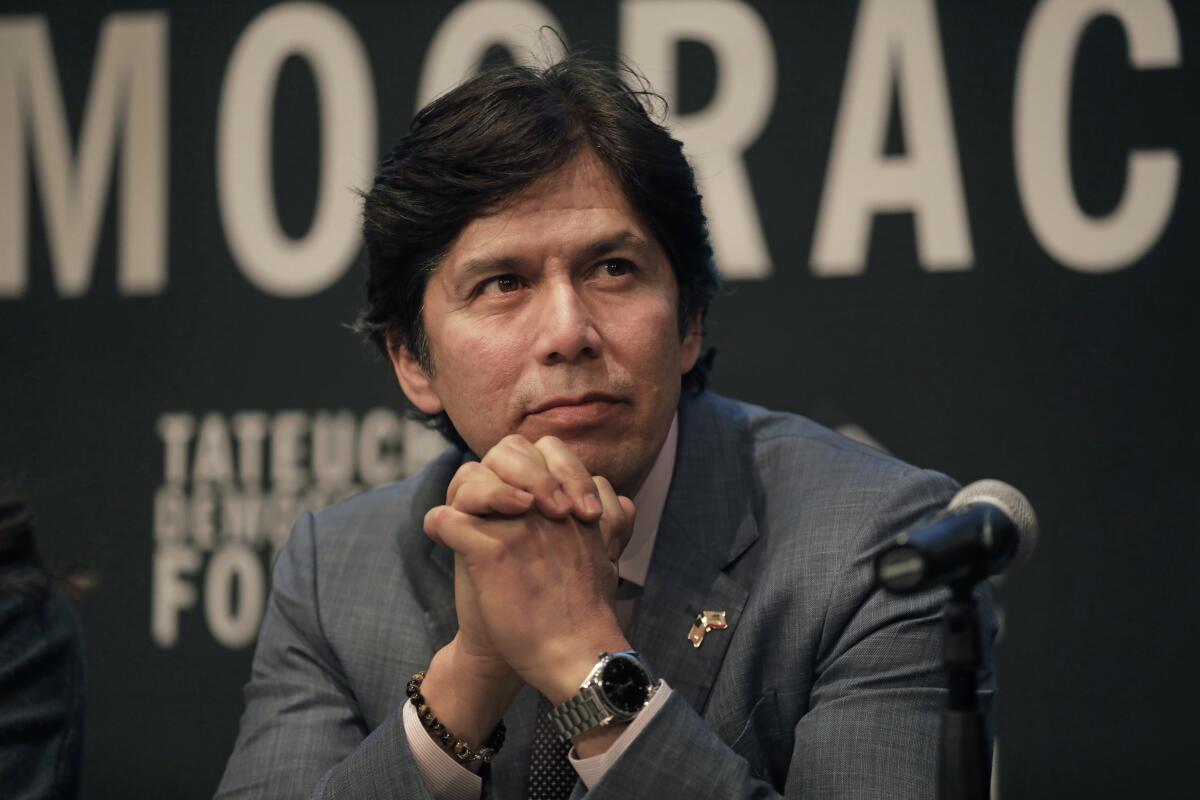
It remains to be seen if the new goal will ease the affordable housing crisis plaguing the region and state. A recent report from the California Housing Partnership found that about 500,000 low-income renters don’t have access to affordable housing in Los Angeles County. Its report didn’t break out how many people lack affordable housing in Los Angeles but it underscores the profound need in the region.
Councilman Mark Ridley-Thomas, who chairs the Homelessness and Poverty Committee, applauded De Leon’s setting of a goal but had a word of a caution and a new task for elected officials. He said the success of clearing Venice Beach of tents and getting people into hotels recently occurred because there was money and a detailed plan to make it happen.
After a month of intensive outreach, most homeless campers have been removed from the Venice boardwalk and given shelter, if only temporarily.
“I believe, and I think it’s the intent of the author [De León] to say precisely this: that the best solution is to create more housing, and a lot of it,” Ridley-Thomas said.
“A goal in and of itself is simply insufficient. We need to have a plan with substantial resources tied to it.”
Times staff writer Doug Smith contributed to this report.
More to Read
Sign up for Essential California
The most important California stories and recommendations in your inbox every morning.
You may occasionally receive promotional content from the Los Angeles Times.
